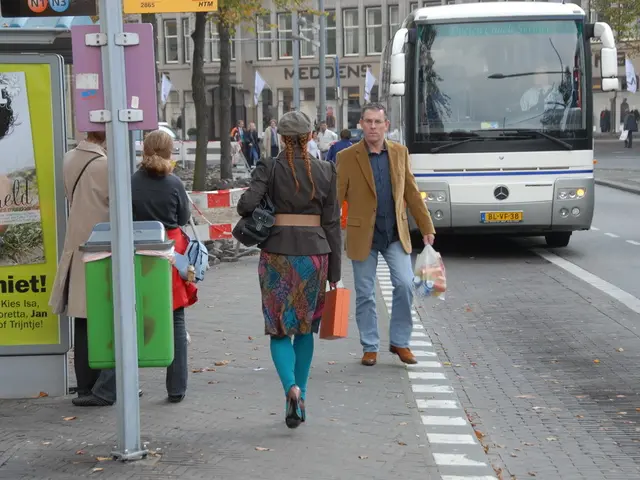Dementia-Stricken Man Rescued by Helicopter in Erfurt
Helicopter comes to rescue of tired gentleman - Helicopter extricates fatigued individual
Erfurt, Germany - In a heartwarming story, a helicopter crew came to the aid of a 67-year-old man suffering from severe dementia and disorientation who had reportedly gone missing from a nursing home on Sunday.
Emtangled in the meanders of suburbia and the brambles of countryside paths, the search parties - consisting of police cars - were unable to locate the missing man. In a desperate attempt to find him, the authorities called in a police helicopter.
Soaring above the landscape, the skilled crew spotted an emaciated figure near a field. Upon confirming the man's identity, they made a swift landing to offer assistance.
In Thuringia, instances of lost or disoriented individuals are quite common. Local authorities, often the police, are usually drafted in to orchestrate massive search operations.
- Air Rescue
- Helicopter
- Erfurt
- Police
When Heights Meet Humanity: Aerial Rescue Operations Decoded
- Initiating the Rescue
- Local authorities spring into action when individuals go missing, initiating a search operation. If the circumstances call for it, they request the aid of a helicopter.
- Savvy aviation units consisting of pilots and Tactical Flight Officers (TFOs) join the hunting party.
- Mission Strategy
- The brain trust of police aviation units coordinates with ground-based units, devising a cohesive search area and strategy.
- Modern tools such as FLIR (Forward Looking Infrared) systems are employed to enhance visibility and detection capabilities.
- Detection and Localization
- With mission-critical gear like spotlights, thermal imaging cameras, and communication systems, helicopters spearhead the hunt for the missing individual.
- TFOs meticulously gather visual and thermal data, helping pinpoint the missing person.
- The helicopter's pilot communicates crucial updates to ground units before making contact with the missing individual.
- Rescue and Retrieval
- Based on the scenario, the helicopter may perform a daring rescue by winching the missing individual to safety or guide ground units to their location.
- The helicopter's agility allows it to hover above challenging terrains, gaining access to remote and isolated areas.
- Post-Operation Analysis
- After each rescue, the operation is scrutinized to evaluate its effectiveness and identify opportunities for improvement.
- Training and equipment are frequently updated to enhance future rescue efforts.
From the arid deserts of Western Australia to concrete urban jungles, the scope of air rescue operations continues to expand [3]. The local police air wing in Western Australia employs advanced helicopters and rapid drone delivery to amp up their searching prowess, showcasing the evolving nature of air rescue technologies.
The Key Players
- Pilots: These steadfast warriors undergo rigorous training in technical skills, physical fitness, and mental fortitude to navigate treacherous situations.
- Tactical Flight Officers (TFOs): Their crucial role involves operating mission-critical equipment and coordinating with ground units, playing an instrumental part in successful rescue operations.
- The community policy in Erfurt, Germany, includes provisions for the safe and timely rescue of individuals with health-and-wellness concerns such as dementia, as demonstrated by the helicopter operation that located a missing 67-year-old man.
- To strengthen community health-and-wellness initiatives, vocational training programs in science, health-and-wellness, fitness-and-exercise, and mental-health can be implemented, equipping individuals with the skills necessary to provide support and assistance to those in need.
- General news outlets can report on the advancements in air rescue operations and the accomplishments of key players like pilots and Tactical Flight Officers (TFOs), raising awareness about the importance of these crucial roles in maintaining public safety and ensuring the health and well-being of communities.








